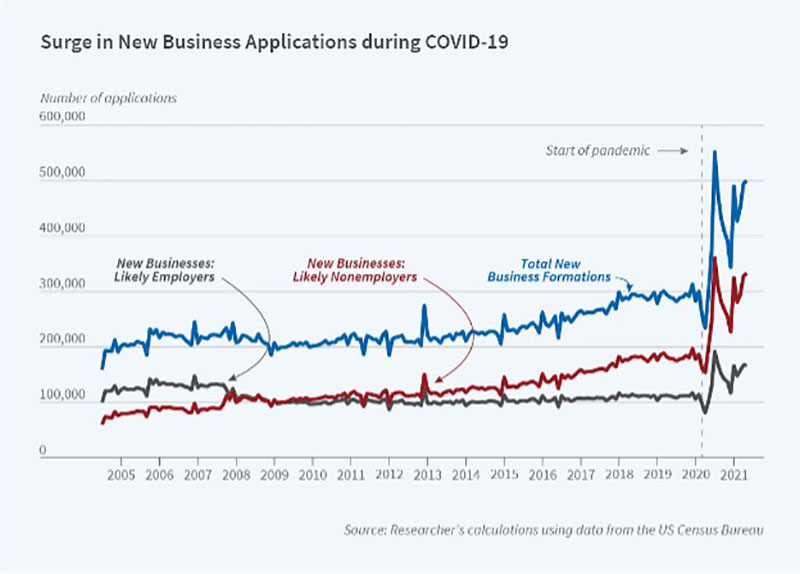Most hiring tools answer whether candidates can and will do the job, but not if they’ll stay. Learn how realistic job previews and motivational-fit interviews can improve retention from day one.
“The Great Resignation” Surprise – It’s Not Entry-Level Workers

The common belief is that the employees who are quitting during “The Great Resignation” are young and don’t make much money, so replacing their meager incomes is just an uber-driving application away.
“The Great Resignation” is not about young employees
While the above scenario is true, two reports throw a heavy wrench into the assumption that “The Great Resignation” is only about young, low-paid, entry-level employees.
AllVoices[i] surveyed 400 HR executives regarding their turnover and found this eye-opening distribution when asked which lob level had the most turnover:
Mid-level 37.5%
Senior level 34%
Entry level 28.5%
Think about that. More than 70% of 400 HR executives said most turnover is NOT coming from entry-level workers. The study also tells us more than 80% of those who quit had been with their employers more than one year with the highest group being three to four years. So the cost of turnover from “The Great Resignation” just rocketed up.
The significance of the three-to-four-year mark is because other studies tell us millennials stay an average of two years and nine months. The oldest millennials turn 40 this year, so the data here implies the largest group of those who quit are also above 40.
Conclusion: The majority of workers we are losing during “The Great Resignation” are older, have more tenure with our companies, and are more likely to be in professional jobs than the commonly held belief that most of those who quit are entry-level workers.
“The Great Resignation” motivation is about more than pay
Very related, The Wall Street Journal reported on an Upwork study telling us more about professional freelance workers.[ii] That group is rapidly expanding with the carrots being more money, flexible hours, and control of the type and amount of work they perform.
What are their greatest motivators? Eighty percent said control over schedule while 73% indicated location flexibility.
The chart below represents the number of new, entrepreneurial businesses formed before and during the pandemic. Consider that this huge spike includes only those businesses for which someone registered for a license. Our government says you don’t need a license if you “conduct business as yourself using your legal name”. This chart represents just those new businesses that have been registered…and likely does not include uber drivers, put-a-sign-out-front professionals, dog-sitters, or many others who abandoned corporate America during “The Great Resignation.”

Note that the spikes appear to represent monthly data, so the total increase in entrepreneurs is in the millions considering the left axis represents 400,000 to 500,000 job gains each month. And again, this is just a partial list.
Few if any of these workers left their jobs to make more money. They instead walked away from corporate America jobs. These two examples always race to my mind:
- The mid-forties healthcare worker who told the Wall Street Journal he decided during the pandemic that his highest value was taking his daughters to soccer practice which his then-corporate job wouldn’t permit him to do, leading him to start his own from-home healthcare consulting business.
- And thousands of restaurant servers who liked their jobs in 2019 when they lost them, but then took online courses and found more fulfilling jobs rather than return to work weekends and holidays serving customers.
But anyone who believes pay is the automatic, reflexive answer for retention is way, way off the mark.
“The Great Resignation” needs more than a one-size-fits-all approach
What does this mean for you? The common answers would be to implement flexible schedules and work from home policies, the trendy go-tos for to counter “The Great Resignation.” Oh, and raise pay, too, even though as reported here previously pay is the 16th highest reason why employees are currently quitting.
The problem with this approach is it’s one-size-fits-all, that it presumes you know precisely which types of schedule flexibility that each of your employees want. In the Wall Street Journal article referenced above, one new entrepreneur who recently left corporate America said his most important priority was taking his girls to soccer practice. You can’t build a policy around that…and it might not be important for that employee two years from now.
The real wake-up call here is “The Great Resignation” has affected all levels and ages of workers, not just entry-level workers. To retain and engage your employees you will have to employ solutions that work for every level, every worker, and for years to come, even when “The Great Resignation” is over.
We’ve cut turnover and improved employee retention even during “The Great Resignation”
Just in the past year, our clients have saved over $2 million by implementing employee retention goals for managers and training them to conduct Stay Interviews the right way, which solves employee retention issues one at a time…all while building trust so turnover continues to decline. And those savings will grow and continue year after year.
Are your strategies for employee retention working?
If not, it may be time to consider a different approach. Schedule a conversation with me at DFinnegan@C-SuiteAnalytics.com to discuss your plans, your roadblocks, how to move forward, and what is working for other companies to cut turnover by 20% and more, even during “The Great Resignation” that may benefit you.
This updated blog was originally published March 21, 2022
[i] https://www.allvoices.co/blog/hr-and-the-great-resignation-whos-leaving-hiring-outlook-and-strategies-for-retention
[ii] https://www.wsj.com/articles/people-quit-full-time-jobs-for-contract-gigs-and-make-six-figures-great-resignation-11647291183?mod=newsviewer_click



